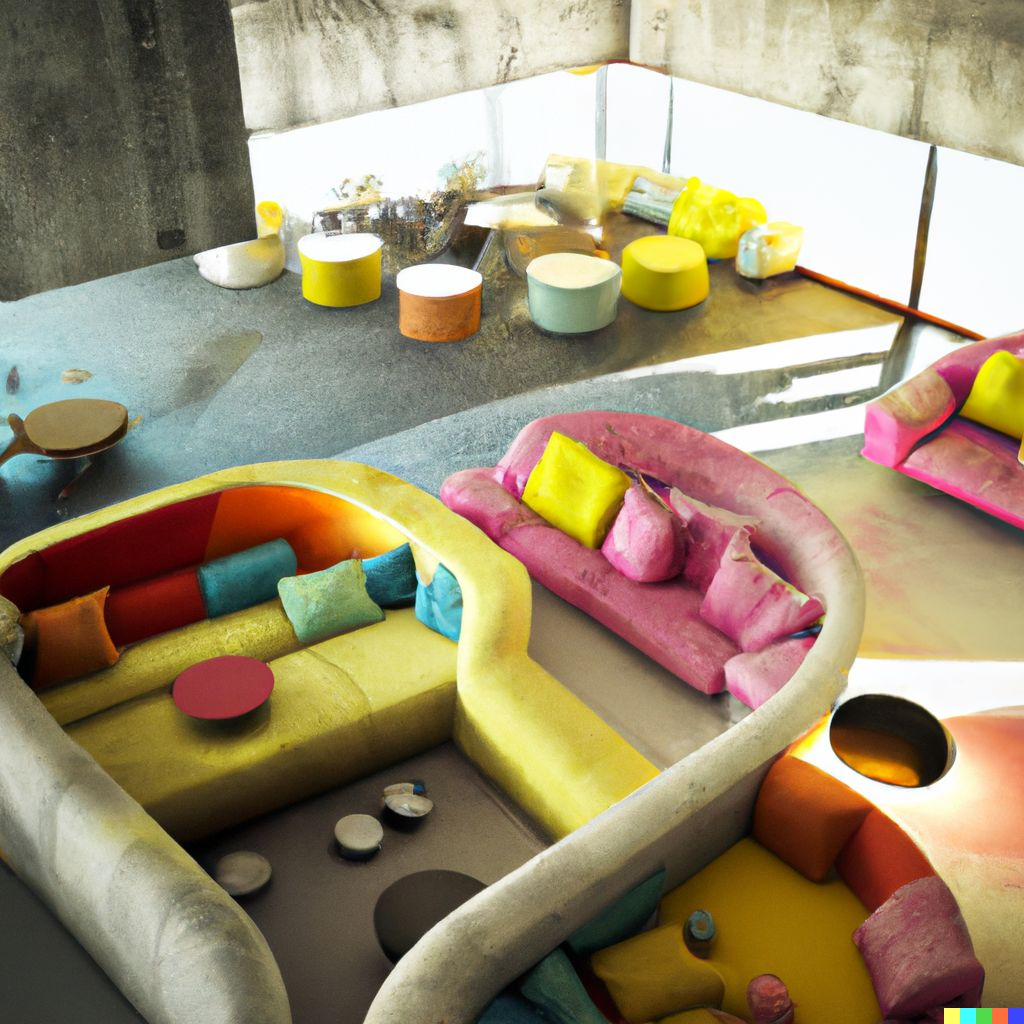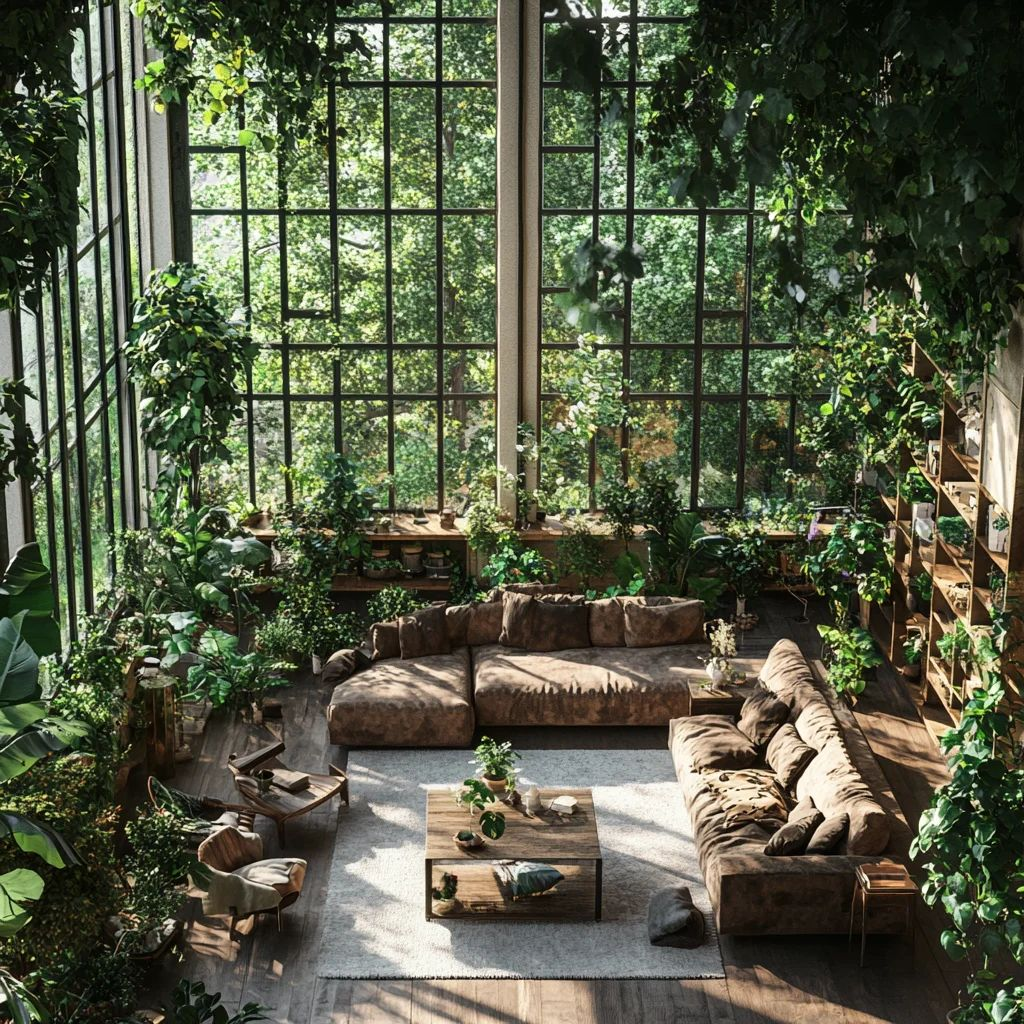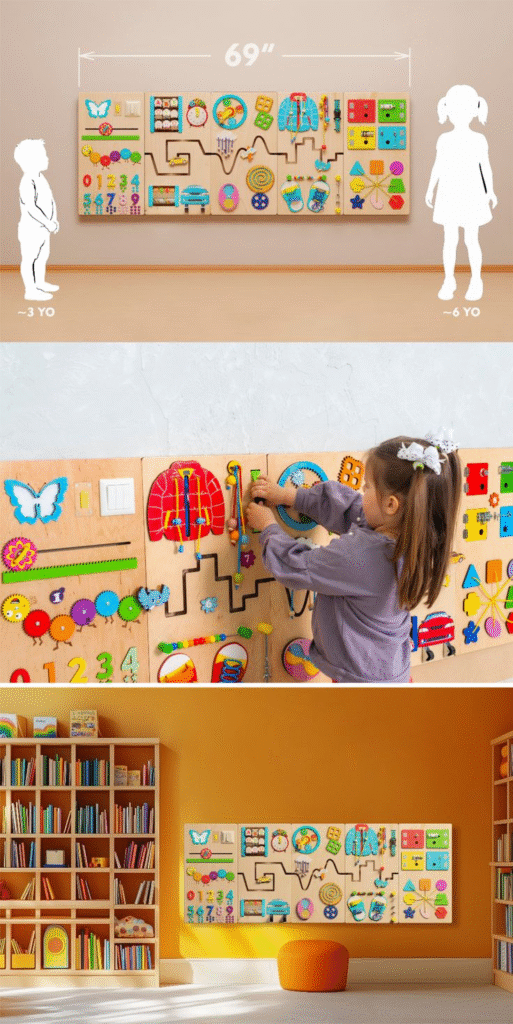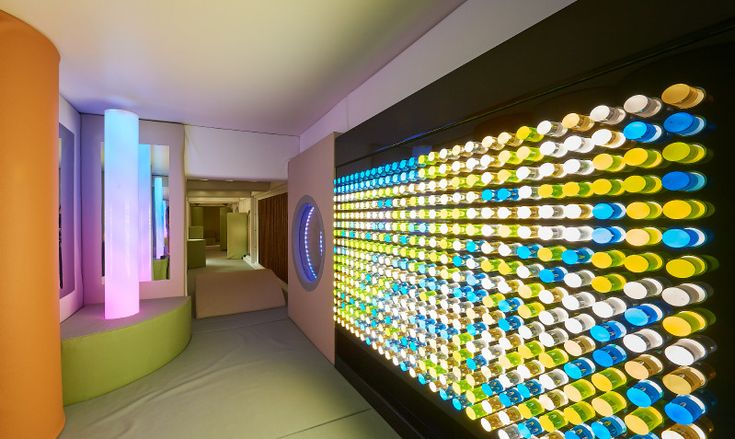Can your home respond to how you feel — without you saying a word?
Welcome to the world of sensory-responsive interiors: homes that don’t just look good but listen. In India, where sensory richness has always been part of cultural life — from incense in temples to the feel of cool marble underfoot — interior design is now going deeper.
We’re entering an era where homes whisper back — adjusting light, temperature, sound, texture, and scent based on how you want to feel. These aren’t smart homes built for tech efficiency. They’re emotionally intelligent homes — designed to regulate, calm, energize, and restore.
🔎 What Are Sensory-Responsive Interiors?
Sensory-responsive interiors are spaces intentionally designed to align with human senses — not just as passive aesthetics but active emotional agents. They go beyond functionality and aesthetics to engage your touch, sight, hearing, smell, and even proprioception (your sense of body in space).
● They use light, sound, texture, scent, and material to evoke specific emotional responses.
● They adapt to the mood, activity, or time of day — either passively (through design) or actively (through technology).
● They are not sterile automation systems — they’re human-centric and emotionally empathetic.
● They help regulate nervous systems, especially useful for trauma survivors, neurodiverse individuals, the elderly, or children.
In short: These are homes that know how to care.

🧠 Why Sensory-Responsive Design Matters (Especially in India)
In post-pandemic India, with increasing noise, stress, and screen fatigue, our nervous systems are overstimulated. Sensory design offers a non-verbal route to recovery.
● Our bodies respond faster to sensory cues than cognitive logic.
● Most emotional regulation is unconscious — texture, light, scent matter more than statements.
● The Indian sensory heritage (rangoli, incense, diya light, monsoon rhythms) is deeply embedded in our DNA.
● For the neurodiverse (ADHD, autism), elderly, or those with anxiety, environmental sensory balance is life-changing.
● Homes today are not just “used” — they are lived in full-time, especially with hybrid work setups.
Our senses are always on.
Good design should speak their language.

🌈 The Five-Sense Framework: How Interiors Talk Without Words
1. 👁️ Visual
● Use soft color palettes for calm: sage green, muted ochres, terracotta, indigo.
● Integrate natural light flow with skylights, jali screens, or sheer drapes.
● Employ gradients of light — dimmable LEDs or day-to-night responsive lighting.
● Use low-glare surfaces to avoid overstimulation.
● Avoid clutter — visual noise is a major source of emotional fatigue.
● Create visual rituals: a diya glow in the evening, a sunbeam on a breakfast table.
2. 👂 Auditory
● Layer white noise with natural sounds — fountains, birdcalls, bamboo rustling.
● Use soft-close cabinetry, noise-dampening rugs, and acoustic wall panels.
● In meditation corners, add low-frequency Tibetan bowl sounds or temple bell chimes.
● In kitchens and living rooms, integrate ambient music or nature soundtracks.
● For neurodiverse users or trauma-sensitive individuals, minimize sudden noises through layout and material selection.
3. ✋ Tactile
● Use raw textures: linen cushions, terracotta floors, jute rugs, lime plaster walls.
● Avoid high-gloss surfaces in intimate zones — matte finishes are emotionally safer.
● Provide varied texture zones: rough stone walkways, smooth marble counters, soft floor pads.
● Children and elderly need temperature-sensitive materials — teak, cork, and local stone are ideal.
● Create sensory cues with grain, weave, and material memory.
4. 👃 Olfactory
● Fragrance is tied to memory. Include natural scent diffusers in daily routines.
● Use incense, ittar, essential oils — jasmine for romance, lavender for sleep, tulsi for clarity.
● Kitchen zones can celebrate masala smells, while bedrooms stay neutral or calming.
● Install scent zoning in entrance lobbies, bedrooms, or work corners.
● Fragrance rituals (diya oil, camphor, lemon) bring cultural identity into sensory decor.
5. 🧭 Proprioception / Movement
● Design flow paths — from light to dark, soft to firm, open to enclosed.
● Provide spaces for slow movement: yoga, stretching, prayer.
● Avoid abrupt changes in flooring or door thresholds — movement should feel fluid.
● Use curved lines and arcs in design to mimic safe movement patterns.
● Movement-based design enhances body-mind connection — especially helpful in healing homes.
🛋️ Sensory Zones: Reimagining Rooms by Feeling, Not Function
Instead of “living room,” “bedroom,” or “study,” think:
● Awakening corner: natural light, citrus scent, fresh textures.
● Retreat zone: warm lighting, acoustic dampening, earthy rugs.
● Focus pod: minimal visual clutter, wood-grain desk, white noise backdrop.
● Emotional nook: candles, tactile blankets, scent memory objects.
● Communal sanctuary: soft seating, circular layout, ambient music.
Let your rooms whisper: Here, you can feel…

🪔 Indian Traditions as Ancient Sensory Design
India has always been a masterclass in sensory living — we just called it culture.
● Rangoli at the entrance = visual invitation & emotional transition
● Diyas at dusk = circadian light regulation
● Camphor and sandalwood = memory-based olfactory grounding
● Jharokhas and jaalis = filtered light & shadow rhythms
● Charpai woven textures = haptic balance
● Temple bells and conch shells = sound resonance for emotional resets
Modern sensory-responsive interiors are not a Western import — they are a rediscovery of what India always knew.
🧬 Who Benefits from Sensory-Responsive Interiors?
While it’s for everyone, certain users depend on it for daily wellbeing:
● Neurodiverse families (autism, ADHD) — regulate over- or under-sensory inputs
● Seniors with dementia — orientation and comfort through textures and smells
● Mental health survivors — emotional regulation through lighting and calm zones
● New parents — soothing environments for babies and postpartum support
● Burnout professionals — creating “restorative homes” for emotional reset
● Introverts or HSPs (highly sensitive persons) — control over light, sound, and social contact
● People recovering from trauma — spaces that feel safe, not just stylish
Design becomes not a luxury — but a lifeline.

📱 Tech + Design: Smart Sensory Integration
When done right, technology supports—not replaces—the human experience.
● Smart lighting: Circadian rhythm-based color temperature
● Soundscapes on demand: Nature sounds or binaural beats via integrated speakers
● Aroma diffusers: Auto-diffuse essential oils based on time of day or mood
● Temperature zoning: Personalized climate control
● Touch-responsive surfaces: Velvety wall panels or memory foam seating
● Scent memory buttons: Trigger familiar olfactory memories at specific moments
But remember — the goal is not automation. It’s empathy.
🏙️ Indian Cities Leading the Whisper Movement
● Bengaluru: Tech-meets-wellness homes, especially among startup founders.
● Mumbai: High-end homes using biophilia + silence zones in high-stress vertical living.
● Delhi NCR: Sensory-paired interiors for neurodiverse children in luxury villas.
● Pune & Goa: Vacation homes with ritual lighting, natural materials, and sensory zoning.
● Kochi & Chennai: Coastal homes integrating humidity-aware textures and soundproof prayer pods.
This isn’t a metro-only phenomenon. It’s spreading to Tier-2 & 3 cities, where emotional well-being is becoming central to home ownership.
🧩 Tips for Designers: How to Design Sensory-Responsive Homes
● Start with a sensory audit, not just a floor plan. Ask:
● What triggers you in current spaces?
● What calms you down?
● What scents remind you of home?
● Work with senses as strategy — not as an afterthought.
● Map movement + emotion: Where do you cry? Meditate? Work best?
● Blend Indian rituals with modern zoning — e.g., using turmeric tones in a healing nook.
● Keep personal sensory preferences top priority — what soothes one person may overstimulate another.
● Avoid design overkill — sensory silence is often more powerful than excess.

💬 Final Thoughts: Homes Should Whisper, Not Scream
In a world of architectural noise — excess marble, flashy chandeliers, overpowering patterns — there’s a quiet revolution building.
Sensory-responsive interiors whisper:
“You’re safe here. You’re seen here. You can rest here.”
Design isn’t just about how a space looks.
It’s about how it listens.
As India evolves, the next big trend isn’t visual — it’s visceral.
Homes will no longer just showcase status.
They’ll showcase sensitivity.
📍Want to design a home that knows how to care?
Let your space become a sanctuary that soothes your senses and regulates your emotions.
Let’s design a home that whispers to your nervous system.
📩 Contact: contact@mishulgupta.com
📍Serving Ambala, Haryana & across India
🌐 www.mishulgupta.com
